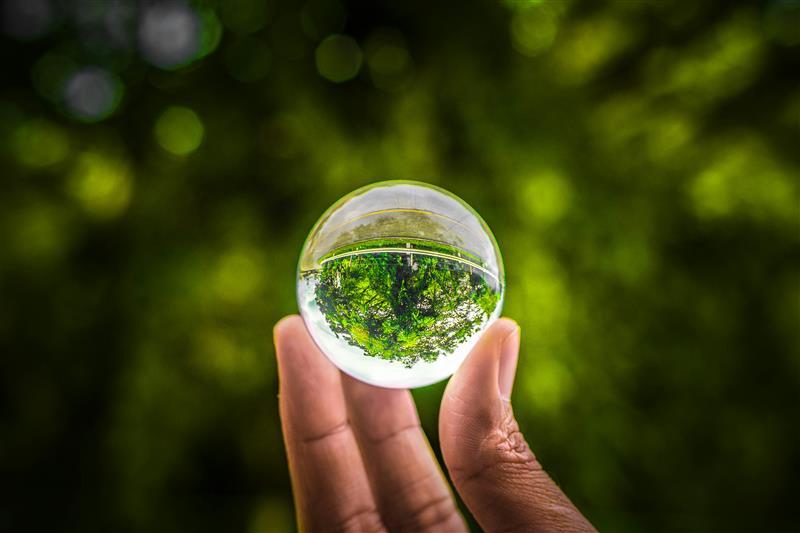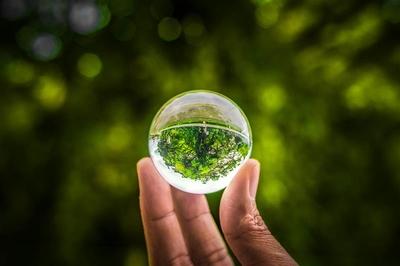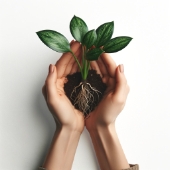
Top 8 Innovations Shaping Our Green Future
“Arts, crafts and sciences uplift the world of being, and are conducive to its exaltation.”

In our quest to address social, economic, and environmental challenges, "sustainability" has emerged as a promising solution to save our planet for current and future generations. In this crucial journey, technology plays a key role. Whether it becomes part of the solution or part of the problem is entirely up to us. In this blog, we explore the top 8 recent innovations that have the potential to combat climate change and pave the path for a greener and more resilient future.
How To Make Innovations Sustainable?
Sustainable innovations involve inventing new products or services or optimizing the existing system to generate long-term social and environmental benefits while creating economic profits.
Top 8 Sustainable Innovations:
Revolutionizing Investment in Restoration Projects: Cultivo, based in Pleasanton, Calif., helps early-stage investors find forest, wetland, and agroforestry projects to invest in. Utilizing satellites, algorithms, and software, Cultivo determines levels of degradation and other key metrics crucial for successful rehabilitation projects. By packaging suitable restoration projects for investors, Cultivo attracts early-stage funding and facilitates the restoration of degraded lands.
Google Flood Hub: Google has extended its Flood Hub platform to provide early flood warnings to hundreds of millions of people living in regions exposed to high flood risk. Using AI-enabled technology, the platform offers locally relevant flood data and forecasts up to seven days in advance, helping communities and individuals better prepare for and respond to flooding events.
Net-Zero Carbon Footprint Footwear: Footwear company Allbirds has developed the Moonshot shoe, which boasts a net-zero carbon footprint. The upper is made from merino wool sourced from regenerative sheep-raising operations in New Zealand, while the midsole utilizes Superlight Foam, a carbon-sequestering material derived from sugar cane. By sharing its emissions reduction secrets and promoting sustainable materials, Allbirds aims to accelerate the adoption of lower-carbon designs in the apparel and shoe industry.
Bridgestone's Sustainable Tires: Global tire giant Bridgestone has unveiled a demonstration tire made from 75 percent recycled and renewable materials. The tire utilizes recycled steel, carbon black, rubber chemicals, as well as bio-based materials such as plant-based oils, bio-based silica, and natural rubber extracted from unconventional sources like guayule. By incorporating sustainable materials, including silk protein, Bridgestone aims to reduce its environmental footprint and achieve its goal of producing tires using fully sustainable materials.
Low-Carbon Cement: Concrete production is a major contributor to greenhouse gas emissions. However, innovations in low-carbon cement offer a potential solution. Companies like Ecocem, Watershed Materials, Fortera, and Solidia are developing cement alternatives that significantly reduce the environmental impact of concrete production. By substituting traditional cement with more sustainable alternatives, these innovations aim to create a more environmentally efficient built environment.
Precision AI Autonomous Agricultural Drones: Precision AI has developed the world's first AI drones for plant-level herbicide application. These drones utilize AI-powered technology to identify and target weeds, allowing farmers to significantly reduce water use, eliminate excess chemicals, and promote soil health. By providing real-time insights and precise herbicide application, Precision AI's drones enable more sustainable and efficient farming practices.
Seaweed-Based Packaging: Notpla and B'ZEOS are exploring the potential of seaweed as a sustainable alternative to plastic packaging. Notpla offers biodegradable coatings, films, and edible Ooho bubbles made from seaweed, while B'ZEOS develops seaweed-based pellets for various packaging applications. Seaweed is renewable, biodegradable, and requires minimal resources, making it a promising solution to reduce plastic waste and environmental pollution.
A game-changing food protection technology: By harnessing naturally derived silk protein, Mori Silk creates a water-based protective layer that slows down the key mechanisms responsible for food spoilage. From oxygen exposure to moisture loss and microbial contamination, Mori Silk acts as a barrier, significantly extending the shelf life of perishable items. This breakthrough innovation offers a versatile and easy-to-integrate solution at various stages of the food supply chain, reducing food waste and contributing to a more sustainable future.

Altogether…
These top 8 innovations exemplify the transformative power of sustainable technology in combating climate change and shaping a greener future. From investments in restoration projects to advanced materials, renewable energy solutions, innovative packaging alternatives, and incorporating sustainable materials like silk protein, these innovations pave the way for a more sustainable and resilient world.
Read Our Insightful Blog Posts

Top 8 Innovations Shaping Our Green Future
Stay ahead with the latest sustainable innovations transforming our world. Explore cutting-edge technologies and solutions shaping a greener future.

Agroforestry: Revolutionizing Farming, Empowering Farmers, and Protecting the Planet
Discover the benefits of agroforestry, a sustainable solution that supports farmers and environmental protection.

The Joy of Giving: Unveiling the Neuroscientific Reasons Behind Charitable Donations
Uncover the neuroscience behind charitable giving and discover how acts of generosity can significantly uplift your mood, enhance social bonds, and contribute to a more fulfilling life.
Green Your Inbox!
With our Newsletters, Stay updated on our Stories of Change and Growth.
As a gift, get a personalised Nature E-card from PH.

